WOMEN IN SCIENCE
This week we have honoured women who made extraordinary contributions in the area of physics. We end this topic with a focus on additional spectacular women who continue to blaze the trail in a range of fields of science.
WOMEN CURRENTLY BLAZING THE TRAIL IN SCIENCE
“In kindergarten my teacher asked me—actually asked the whole class—now what do you want to be when you grow up? And I said, “I want to be a scientist.” And she looked at me and she said, “Don’t you mean a nurse?” Now clearly, there is no issue with being nurse. But the issue back then was, is that’s the only thing she could see a little girl growing up to do, that had something to do with sciences. So, she was trying to help guide me and counsel me, and… as to what was possible. But I really just put my hands on my hips, and I said, “No, I mean a scientist.”- Mae Robinson American Astronaut, First African American woman to get into space.
Dr. Mae Jemison- (American Astronaut and Physician)
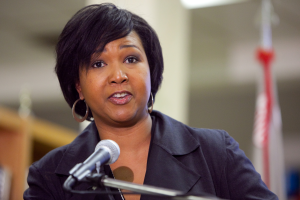
In 1992 as a mission specialist on the space shuttle Endeavour, she became the first African American woman to go into space. Dr. Jemison was the science mission specialist on the flight where she conducted experiments in life sciences, material sciences, and was co-investigator in the bone cell research experiment.
She was born in Decatur, Alabama in 1956. Jemison won a scholarship to Stanford University at age 16, graduating in 1977 with a degree in chemical engineering. She received her medical degree from Cornell University in 1981. During medical school she worked as a volunteer in Cuba, Kenya, and a Cambodian refugee camp in Thailand.
After graduating, knowing she wanted to work in the developing world, and ultimately work on biomedical engineering research, she applied to serve as a Peace Corps Volunteer, and became a medical officer in Sierra Leone and Liberia from 1983 to 1985.
Returning home from the Peace Corps, Dr. Jemison accepted a position as a general practitioner with CIGNA Health Plans of California. While at CIGNA, Dr Jemison began taking graduate engineering classes and applied to NASA for admission to the astronaut program. She was accepted as one of fifteen astronaut candidates in 1987. She completed her training in 1988 and served in 1992 as a mission specialist on the space shuttle Endeavour. At 36 years old, she became the first African American woman to go into space.
In March 1993, she founded the Jemison Group, Inc., her private company that aims to research, develop, and implement advanced technologies suited to the social, political, cultural, and economic context of the individual, especially for the developing world.
She received the Essence Award in 1988. She was awarded the Gamma Sigma Gamma Woman of the Year in 1989 and was named one of McCall’s 10 Outstanding Women for the 90’s in 1991. Jemison was awarded Johnson Publications Black Achievement Trailblazers Award in 1992. She inspired the Mae C. Jemison Science and Space Museum at Wright Junior College in Chicago, which was dedicated in 1992. She was named to Ebony’s Most Influential Women list in 1993 and was inducted into the National Women’s Hall of Fame in 1993.
Spectacular Female Scientists from Pakistan
Tasneem Zehra Husein is Pakistan’s first female string theorist at the age of 26 and is one of the few Pakistani women to obtain a doctorate in physics. She got her O-Levels at the age of 13 and her A-level examinations at the age of 15. Husain is an eminent scientist, writer and educator who obtained her Bachelor of Science in mathematics and physics from Kinnaird College and a master’s degree in physics from the Quaid-i-Azam University. She was awarded a scholarship by the Abdus Salam International Centre for Theoretical Physics (ICTP) to study in the field of High-Energy Physics in Trieste, Italy. Husain obtained her PhD in theoretical physics from Stockholm University, and then went on to do her post-doctoral research at Harvard University. While still a post-doc, she helped found the Lahore University of Management Sciences (LUMS) School of Science and Engineering in Lahore, where she later taught as a faculty member.
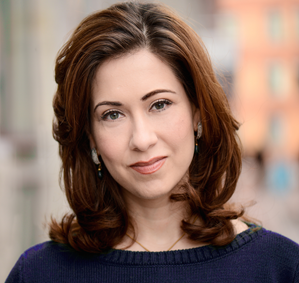
Nergis Mavala is a Karachi-born quantum astrophysicist and Associate Department Head of Physics at MIT. She was a member of the team of scientists that detected gravitational waves, ripples in space and time hypothesised by physicist Albert Einstein a century ago. Mavalvala did her BA at Wellesley College in Physics and Astronomy in 1990 and a Ph.D in physics in 1997 from the Massachusetts Institute of Technology. Before that, she was a postdoctoral associate and then a research scientist at California Institute of Technology (Caltech), working on the Laser Interferometric Gravitational Wave Observatory (LIGO). She also received the prestigious MacArthur Foundation Award in 2010. Mavalvala also won the first Lahore Technology Award launched by Information Technology University on December 17, 2017.
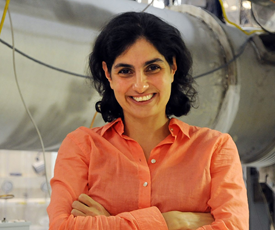
Hibah Rahmani was born in Pakistan, but her family moved to Kuwait when she was a month old. After completing high school in Kuwait, Hibah obtained a Bachelor of Science in Computer Engineering, from the University of Central Florida, graduating summa cum laude. After graduation, she accepted a position with The Boeing Company as a Systems Engineer working on the International Space Station processing at Kennedy Space Center (KSC). While working full-time for Boeing, Hibah earned a Master of Science in Electrical and Computer Engineering from Georgia Tech. Hibah is also a registered Professional Engineer (P.E) in the State of Florida. After working for Boeing for seven years, Hibah accepted a position with NASA as an Avionics and Flight Controls Engineer. Currently, she works in the Avionics Division of the Engineering and Technology Directorate. She is part of the Expendable Launch Vehicles (ELV) Avionics Branch, where she supports the NASA Launch Services Program (LSP), working on ELVs such as Pegasus and Falcon 9. While working at NASA, Hibah obtained a Graduate Certificate in Space Systems Engineering from Stevens Institute of Technology and also participated in the International Space University’s 2012 Space Studies Program. Hibah is the recipient of several awards including Pride-at-Boeing awards, NASA Group Achievement awards and NASA On-The-Spot awards.
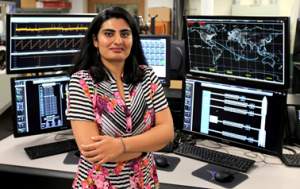
Ethel Delali Cofie (Ghanaian IT Consultant)
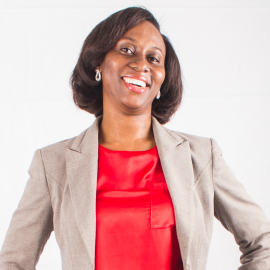
In 2016, she was named one of the Top 5 Women impacting IT in Africa. In 2015, BBC Radio did a feature on her and several of her opinion pieces are published on CNN on the topics of technology in emerging markets, and women leadership. In 2014, USA Secretary of Commerce Penny Pritzker referred to her as dynamic, courageous and fearless leader.
She has a bachelor’s degree in Computer Science from the Valley View University in Ghana and a master’s degree in Distribution Systems from the University of Brighton and an Executive Degree in Leadership, Business and Entrepreneurship for the Yale School of Management. Currently she is the CEO and founder of Edel Technology Consulting, she is on the board of companies across Africa including Egotickets and AMOSS Holdings SA and the Founder of Women in Tech Africa, Africa’s largest women in tech group with members in over 30 Africa countries and in the diaspora and growing.
She is a Mandela Fellow for President Obama’s Young African Leaders initiative (YALI) with a wealth of technical and commercial skills acquired across a wide range of demanding roles and Over 12 years’ experience working in the UK ,Ghana, Nigeria and Sierra Leone on projects like Bill and Melinda Gates funded Mobile Technology for Health project, the Ford Foundation’s Election Monitoring project for Nigeria and as Head of Commercial Solutions for Vodafone conceptualizing, executing and working with teams to align Corporate strategy to IT strategy and to develop and manage creative technology solutions.
Faiza Mohammed Al-Kharafi (Kuwaiti Chemist and Electrochemist)
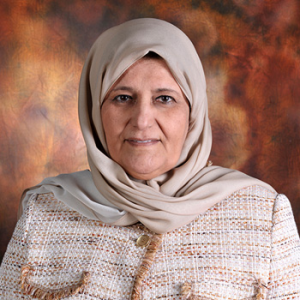
She was the first woman to head a major university in the Middle East when she became the President of Kuwait University in 1993 and led until 2002. She is currently the Vice President of the World Academy of Sciences.
Faiza Al-Kharafi was born in Kuwait in 1946. She received her BSc from Ain Shams University in Cairo in 1967. She then attended Kuwait University where she founded the Corrosion and Electrochemistry Research Laboratory. She received her master’s in 1972 and her PhD in 1975.
Al-Kharafi has studied the impact of corrosion on engine cooling systems, distillation units for crude oil, and high temperature geothermal brines. As an electrochemist, she has studied the electrochemical behavior of aluminium, copper, platinum, niobium, vanadium, cadmium, brass, cobalt, and low carbon steel. She collaborated on the discovery of a class of molybdenum-based catalysts that improve gasoline octane without benzene by-products. She joined the Board of the United Nations University in 1998. In 2006, she helped found the American Bilingual School in Kuwait.
Uma Chowdhry (Indian Chemist, Engineer and Materials Scientist)
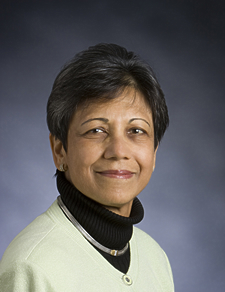
She left India with only $8 in her pocket and headed for America to get a better education. Her aim was to come study physics and engineering, but she fell in love with chemistry, particularly materials science the study of solids at the molecular level.
Chowdhry was born in Bombay (now Mumbai), India, in 1947. She received a bachelor’s degree in physics from the University of Bombay (now Mumbai University) in 1968 and then left for America where she received a master’s Degree in science from the California Institute of Technology (Caltech) in engineering science in 1970. After two years with Ford Motor Company, she entered the Massachusetts Institute of Technology (MIT) where she earned a Ph.D. in materials science in 1976.
The following year, Chowdhry joined the DuPont company as a research scientist at the DuPont Experimental Facility in Wilmington, Delaware. While still at the laboratory bench, Chowdhry worked primarily on developing new ceramic materials for the field of high-temperature superconductivity. This work generated over fifty research papers and twenty patents. In 2002, she was named DuPont’s Vice President of Global, Central Research & Development. In 2006, she became Senior Vice President of the company, as well as Chief Science and Technology Officer, positions she continued to hold until her retirement in 2010.
In 2003, Chowdhry was elected to the American Academy of Arts and Sciences. In 2011 she received the 2011 IRI Medal for her leadership contributions at DuPont. She also received the 2011 Earle B. Barnes Award for Leadership in Chemical Research Management from the American Chemical Society.
Dr. Jane X Luu (Vietnamese Astronomist and Astrophysicist)
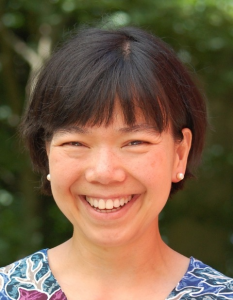
As a graduate student at the University of California at Berkeley and the Massachusetts Institute of Technology, she worked with David C. Jewitt and in 1992 that she and Jewitt made the discovery for which each remains best known: the Kuiper Belt, a vast disc of small, icy bodies orbiting the sun beyond Neptune. It was this discovery that eventually led to Pluto’s being demoted from the status of a planet to that of a Kuiper Belt object.
She was born in July 1963 in South Vietnam. She obtained a bachelor’s degree in Physics from Stanford in 1984. A subsequent short stint at the Jet Propulsion Laboratory introduced her to planetary astronomy. She then enrolled as a graduate student in the Department of Earth, Atmospheric, and Planetary Science at the Massachusetts Institute of Technology (MIT) and there she began to work with Jewitt.
Luu continued to work on characterizing a great many new Kuiper Belt objects over the intervening years. In recognition of her revolutionary discoveries regarding the outer reaches of our solar system, in 2012 Luu was awarded two of the most prestigious prizes in her field: the Shaw Prize and the Kavli Prize in Astrophysics.
She has also served on several scientific committees, including NASA’s Origin of the Solar System Committee, various telescope time allocation committees, and most recently, the National Academy of Sciences’ Planetary Science Decadal Survey for 2013 – 2022.
Sourced from internet searches and Wikipedia.
